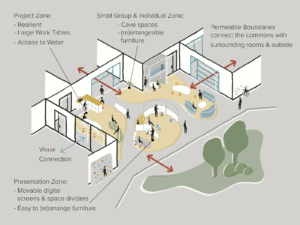Common Core, Day 2
It’s the dawn of a new era. America took a big step forward yesterday and you probably missed it. The nation’s governors and state school chiefs released Common Core State Standards to a decidedly mixed buzz—there is something for everyone to criticize. Before the carping, editing and adding reach a fever pitch, two important points need to be made: this is good and important work.
First, the Common Core is a thoughtful framework that expresses with elegance and clarity what students should know and be able to do. The project mission of “fewer, clearer, and higher” expectations for American students is manifest in the draft released yesterday. The expectations are clearly stated but it’s not a national curriculum—states and districts will need to decide who to teach to these standards. The standards are internationally benchmarked (which is important because, as the Senate heard Tuesday, American kids lag international counterparts by about a year). And while there will be great temptation to add to the list from everyone who cares about a subject, the standards include just enough but not too much (EdWeek.org has good early coverage of the debate).
Second, this is an important project. A bizarre and byzantine set of structures evolved to govern American education. Every state has their own set of learning expectations. Many of them are low and getting lower with pressure to show more passing students. Most state standards are not very coherent and, by international standards, include a strange sequencing of topics. All are too broad. The Common Core addresses all of these problems by laying out expectations that are high, clear, and coherent. A common set of expectations will also attract investment in new curriculum, tests, and school models.
An example of an important contribution is the high school math recommendations; the Common Core lays out two rational college ready math sequences, one in the American tradition, the other European. Both pathways incorporate probability and statistics (which are absolutely essential for all students today) and prepare students to be college eligible.
New testing regimes will be the real impact of the Common Core on the lives of 50 million students and 4 million teachers. With a big pot of federal money at stake, states are jockeying for position and joining multiple assessment consortia to hedge their bets. Backroom merger talks are reaching a quiet crescendo. And we’re about to make a big mistake. Instead of designing new assessment systems that take full advantage of technology, most states will adopt another version of paper and pencil bubble sheet standardized tests.
Here’s the problem: it’s complicated and states are broke. With new standards, Race to the Top, and pending reauthorization of federal education policy, there are a lot of variables in play. In algebra, the first step is to simplify by eliminating variables. Broad adoption of cheap standardized tests would simply things, but it would be a wasted opportunity.
We’re are at the beginning of a new era of digital personal learning where videos, simulations, games, and virtual environments become part of every student’s learning experience. Assessment embedded in these experiences, just like the games the kids play at home, will tell us more than we’ve ever known about learning levels as well as instructional and motivational strategies. Online quizzes (i.e., adaptive assessment) can quickly diagnose learning difficulties. Essay scoring systems can help teachers wade through a stack of papers.
All that to say we can do better than a bubble sheet test at the end of the year. And we’re about ready to lock that system into place for another decade.
If you think education is important, send a note to your state superintendent or commissioner. Tell them you support the Common Core and that our kids deserve better tests.





Kevin R Kosar
Sir:
I enjoyed this piece.
I think that we're a long way from states adopting the Common Core standards. I tend to think the odds lie with states continuing to have patchwork standards that are not cenrtal to their school systems. Here is why: http://kevinrkosar.com/wordpress/?p=877
Regards,
KRK
Replies
Tom Vander Ark
You could be right. And those that adopt will tinker/add reducing some of the value to those trying to align content/services.
Chris Green
I have spent much time over the last 3 weeks pouring over the state standards for Math in Florida and NY. I am trying to align our Math curriculum content to these state standards. Often the references are difficult to interpret and there is much duplication. Having looked over the recent draft of common core state standards, I am impressed by the obvious work that has gone into it. However, I hear the voices of descent from certain states, in particular those who feel they are already leaders in setting high standards.
Replies
Tom Vander Ark
Thanks Crhis. Enjoyed meeting in London. Appreciate your work.